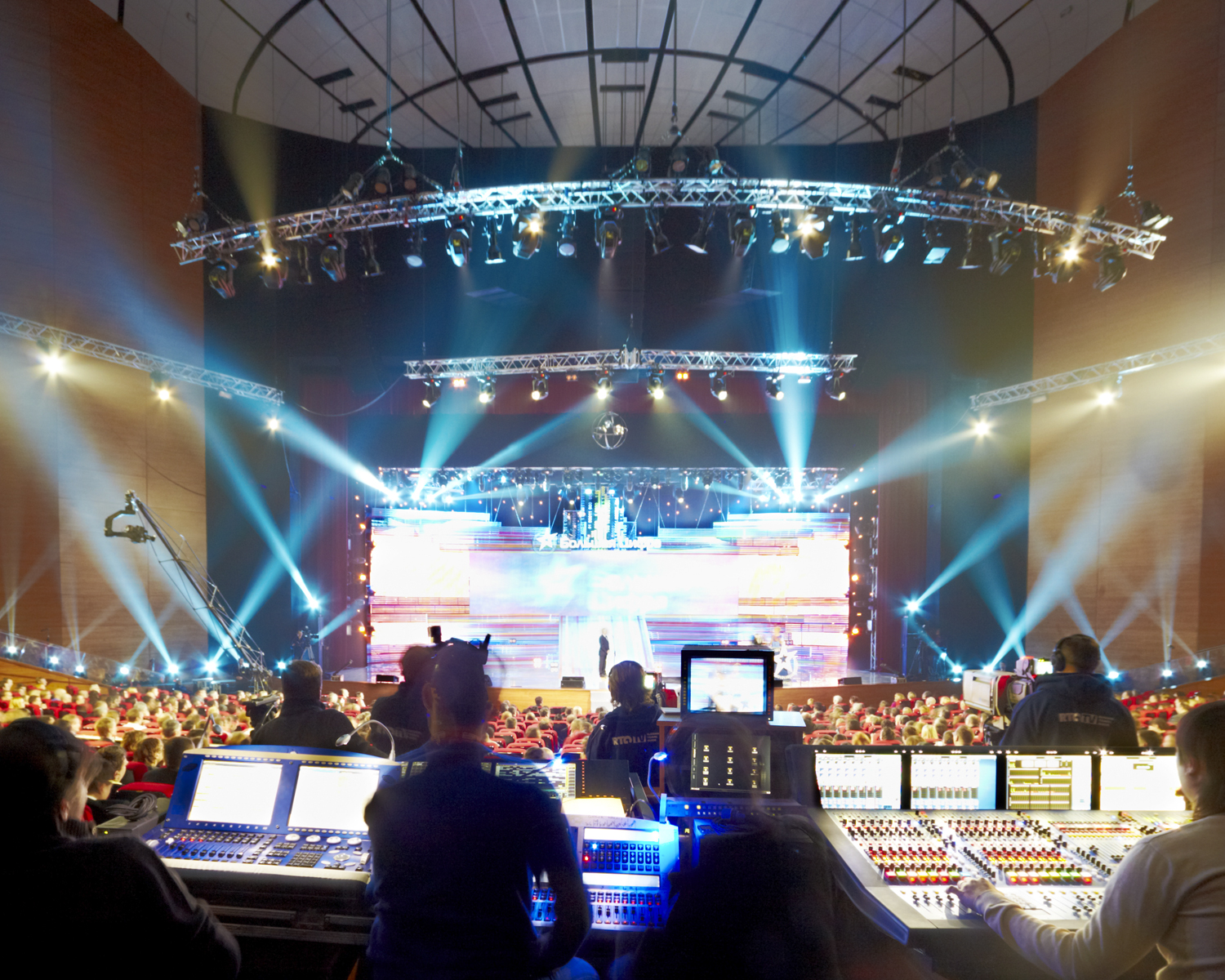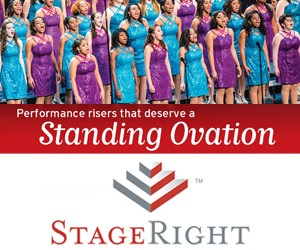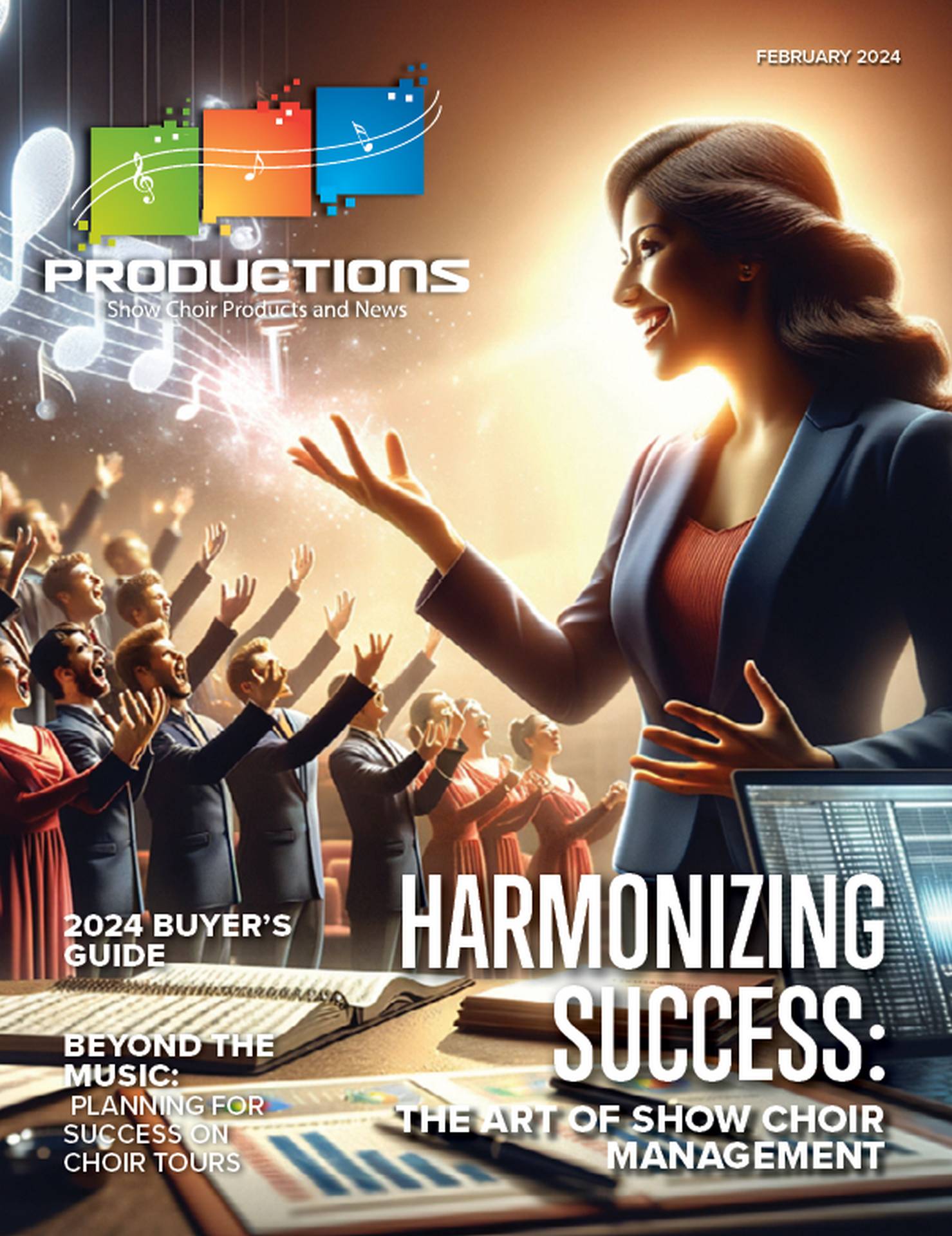
Sometimes the task seems overwhelming and complicated. Yet, providing the best auditorium for your students and classes, and staying on top of the return on your investments, is not that difficult, as long as your system is designed properly. If a system is designed well, you should be able to integrate new technology easily and without any drastic changes. Ultimately, if your system works, and you’re not having reliability issues, it can last for 10 to 20 years.
No matter what your system is like now, it’s always smart to think about what you’ll need in the future, and what technology it may be able to handle in upcoming years, and even decades. In order to make sure your upgrades last as long as possible, always purchase quality gear and “future proof” your space as much as possible. With any upgrade that involves anything as large and as complicated as a performance space, the biggest concern is safety. Be sure to always have your system inspected by a licensed professional. This doesn’t just include your lighting, but rigging, audio and any installed systems should be inspected before making any changes. If everything in your system is safe to use, up to code and in full working order, you can make your first big decisions.
The first question you should ask is, “What can we afford?” Once you have an idea of your working budget, you can begin to parse out upgrading opportunities. Figure out what you can tackle right away, and what steps you’ll have to take to get there.
Small budget (Up to $25,000)
If you don’t have a budget for upgrading your school’s performance space(s), be sure to add saving to the top of your goals list. That way, when you have enough, you’ll be able to spend it wisely. One of the biggest mistakes you can make is moving forward with an upgrade to your lighting system without having a sufficient budget to do it properly. If your space is under-designed, it won’t last very long, and will likely have to be fixed shortly after installation. This not only deprives your students and staff of the proper tools to learn, but it can also be waste of the funds you have available.
Think about your neighbors-are any spaces around you upgrading their own systems? You may be able to purchase their second-hand equipment, and give it more life in your auditorium. This is easiest with smaller items, such as lighting fixtures and soft goods, but you can repurpose almost anything. Purchasing used gear from reputable resellers can also be a great option while you save up for a bigger overhaul.
Medium budget ($25,000-100,000)
If you have a failing infrastructure-or antiquated gear you can’t get parts for-your money would be best spent upgrading those pieces. The first major option is to simply upgrade your power control system to something functional. It’s not the cheapest, but can last for many years. Many spaces look into converting to LED when changes need to be made. Upgrading your entire system to handle this newer technology can often save you more money in the long run, versus only partially upgrading the system. Installing a “hybrid” system, one that can handle LED and incandescent fixtures, is typically more expensive than changing the entire system to LED. So, if it’s a matter of waiting a few years to do a proper overhaul, it’s probably worth doing so.
If your infrastruccture is decent, but aging, you can usually integrate new technology. That may include upgrading your incandescent lighting fixtures to a more current and efficient model. Getting rid of 6x9s and 360Qs, and going with a more modern leko, can have a dramatic effect on the product you’re able to provide on stage.
If your power infrastructure is fine, was updated within last 10 years or so, and you have a lot of new gear, think about offering your students the opportunity to use the newest types of equipment. LEDs can be integrated easily if you have a dimming system can provide undimmed powered through relay or constant current modules. LED fixtures offer more flexibility in designs, and the opportunity for students to use the newest gear they’ll be seeing out in the field. Smaller school districts or smaller colleges often aren’t able to provide the newest devices, so upgrading to include them is always beneficial for your students’ future job prospects.
When thinking about switching to LEDs, part of the cost difference is the energy savings. It’s well known that LEDs consume less power, but they also don’t release as much heat as incandescent, so they save money on your cooling bills. This is often harder to quantify in actual savings, but it should be taken into account. If you don’t have a system that can provide proper power for LEDs, you can always run dedicated circuits from power outlets to those devices. Starting with a handful of LED par fixtures is generally an affordable way to start to integrate new items into your system, without too much investment. You can get a good number of LED par fixtures for the cost of one decent moving light. If you already have LED fixtures, the next step would be to look into moving lights.
These have seen a lot of advances recently, and have even started to include LED engines. If you can afford to, this is a great place to spend extra money. An important thing to remember is that moving lights take a lot more maintenance time than any other fixture types, including LEDs. They will add substantially to any programming time, because someone will have to program every parameter of every light. While they are more time consuming to integrate into your space, the effect can also be pretty impressive. Any time you’re looking into upgrading a system to begin using multi-parameter devices, like LEDs and moving lights, you need to make sure your control system will be able to handle it. Make sure you have data distribution, CAT 5 or DMX from your lighting console to the fixtures’ locations. If it’s an existing system, and you don’t have the money to install wires, there are wireless DMX transmission tools available that have become very reliable, and can create a large system with multiple universes of output. When thinking about upgrading, making sure your console can handle multi-parameter devices may have to be on the list before deciding on actual fixtures, as they will be unusable without it.
Large budget ($100,000+)
If now is the time to upgrade multiple parts of your perofmrance space and you have an appropriate amount of funding to allocate to the lighting system, you now have more foundational and overarching options. Take into account the feedback of the space’s staff and major users, desired technological integration and budget. Do you want to go all LED, or do you want to look into a Hybrid system? Do you need to make any other major foundational upgrades to the system, or do you just need to fix the power control devices and upgrade the lighting fixtures?
No matter how much you have to spend on upgrades, it is extremely important to bring in an outside consultant or advisor to help you through the entire process. Sometimes internal employees don’t (and can’t) know the best technology available at the time-simply because they don’t see it every day. Some retailers will offer this service for free, and there are also dedicated consultants that charge a fee. The cost is generally worth it because you’re going to be sure to have a better working and cohesive system in the end. Just don’t try to do it alone.
Whether your auditoriums primarily house show choir or theater productions, concerts or a little bit of everything, you always want to make sure to present the best product possible. Often, that starts with a good foundation and power system, and extends all the way to individual stage and house lights. Upgrading your space is an important part of making sure you stay up-to-date with the latest technology, and by taking these considerations into account, you’ll set yourself up to have successful performance seasons for years to come.










